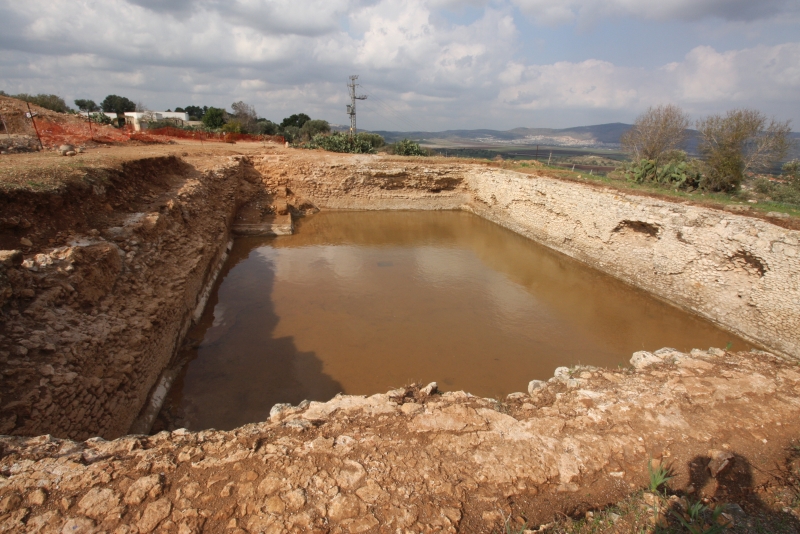
A large, ornate third century swimming pool discovered in Zippori may be the same pool where, according to the Mishna, Rabbi Judah the Prince dipped on the Fast of 17th Tammuz
Ongoing excavations in the Talmudic period site of Zippori have come across something new: a large, ornate pool, twenty-one meters by fourteen and a half, and three and a half meters deep. Dated to the third century, the pool brings a passage from the Babylonian Talmud to mind:
R. Eleazar said in the name of R. Hanina: Rabbi [Rabbi Judah the Prince, head of the Sanhedrin and redactor of the Mishna] planted a shoot on Purim, and bathed in the [bathhouse of the] marketplace of Sepphoris on the seventeenth of Tammuz and sought to abolish the fast of the ninth of Ab, but his colleagues would not consent. (Bavli, Tractate Megilla, 5a-b)
Peace reigned in the Roman empire in Rabbi Judah the Prince’s lifetime, and the Jews still remaining in the land of Israel after the turmoil of the Bar Kokhva Revolt enjoyed relative prosperity and tolerance. The Talmud even describes Rabbi Judah Nasi as a childhood friend of a Roman emperor identified as Antoninus, possibly the emperor Antoninus Pius (86-161).
Although only 130 years had elapsed since the destruction of the Temple in Jerusalem, and a mere 70 since the Emperor Hadrian had almost wiped out the Jewish community subduing Bar Kochva, it would seem that Rebbe, as the editor of the Mishna is often called, felt that this was a time of peace. He therefore suggested that the fasts commemorating the stages of Judea’s loss of liberty be discontinued, and to make his point, publicly entered the bath-house in his home town of Zippori on the fast of the 17th of Tammuz. His colleagues disagreed, and insisted that the fasts should continue to be observed.
Dr. Zvika Zuk, the archaeologist directing the excavation, observed:
The pool, located by the entrance to the national park [of Zippori], is a fascinating find and will definitely become an important additional attraction to the park. We wondered, before any of the data had been examined, whether this pool could be Zippori’s Karona, or spring (Greek, κρουνα), and the information and artifacts resulting from the excavation suggest that it definitely could be.
It is indeed tempting to connect a Talmudic disagreement on such a central issue, involving a leading figure from Jewish tradition, with the specific place where an event from his life may actually have happened. Hopefully further investigation may add further concrete evidence to bolster the theory.
